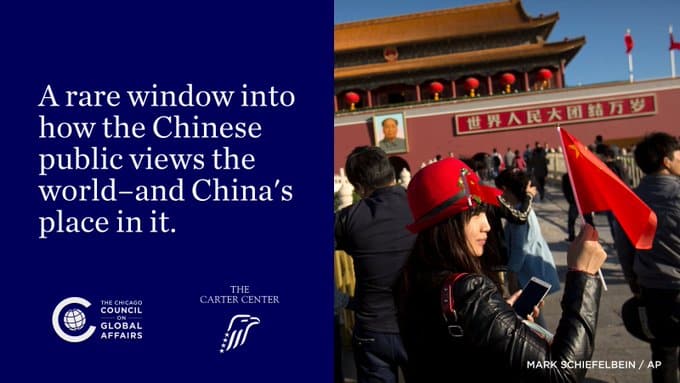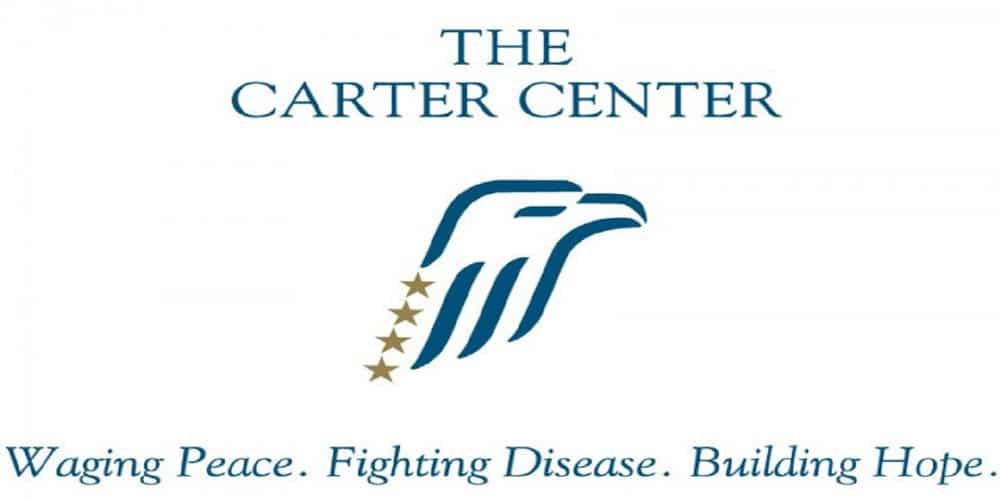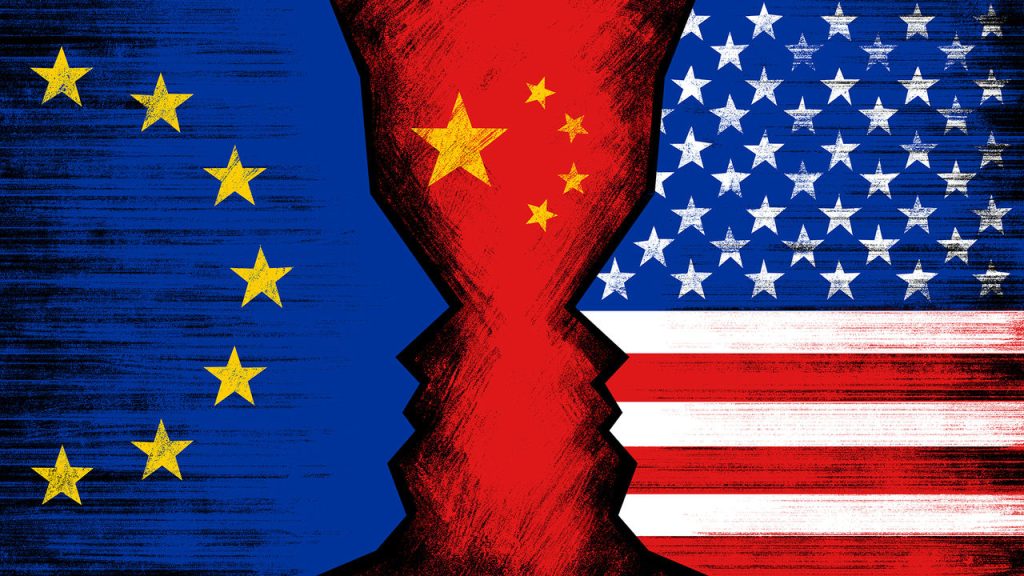Can the First North Korean Nuclear Crisis Inform the Current Challenge?
(Presentation at The Sixth TCC-CPAFFC Forum on US-China Relations by Marion V. Creekmore, Jr.)
Unlike the other panel members and most of the conference attendees, I am not an expert on China, the Korean Peninsula, or Northeast Asia. I am speaking because I accompanied former US President Jimmy Carter to North Korea in 1994 where he achieved a negotiating breakthrough that led to a peaceful resolution of the first North Korean nuclear crisis.
I think there are lessons from the first North Korean nuclear crisis that could be useful in dealing with today’s challenge. Let’s review what happened.
The situation in 1994 was quite different from that of today. North Korea did not then have any nuclear weapons. Its missile program was not a threat. Yet the world found itself in a crisis that threatened to spiral into a second Korean War.
The secret Pentagon assessment at the time: if fighting commenced, the human cost would be 52,000 US casualties, 490,000 South Korean casualties, and many more North Korean casualties; the financial cost for the first 90 days: $61 billion in 1994 dollars, or $147 billion in today’s dollars.
At that time North Korea had a 5MWe, graphite-moderated nuclear reactor that was operational and two larger ones under construction. It also possessed a reprocessing facility that could produce plutonium from the spent fuel rods used in the nuclear reactor.
When North Korea placed its nuclear facilities under IAEA safeguards in 1992, it admitted that it had earlier reprocessed a small amount of plutonium—90 grams. The IAEA suspected that the amount was larger and demanded special inspections, which North Korea refused.
In 1994 the IAEA adopted a tough resolution against North Korea for refusing to allow the intensive inspections the agency demanded. It threw the issue to the UNSC for enforcement. The US led an international effort to get the Security Council to adopt rigorous economic sanctions against North Korea.
North Korea threatened to interpret sanctions as a declaration of war. Its military leaders at the DMZ told their South Korean counterparts that Seoul would be turned into a “sea of fire” if war broke out. They also warned the American military officials there that the U.S. would not be allowed to beef up its military force in and around the Korean Peninsula as it had done before launching Desert Storm against Saddam Hussein in 1991.
The US Defense Department prepared for President Clinton a set of options for increasing US military strength in and around the Korean Peninsula. It ruled out the use of “surgical strikes,” fearing that North Korea would retaliate with a massive attack on South Korea.
In May, North Korea began removing the spent fuel rods from its 5MWe reactor. Reprocessing those fuel rods would produce enough plutonium to make 5-6 nuclear bombs.
That is when former US President Jimmy Carter became personally involved.
His own analysis and those of his domestic and foreign contacts convinced him that UNSC sanctions might indeed cause North Korea to retaliate militarily. He learned that the US ambassador and the commander of US forces in South Korea shared his concerns.
Carter believed strongly that war should not be risked before someone talked with Kim Il Sung, the North Korean president, who would decide whether his country would go to war over the nuclear weapons issue. Moreover, he thought Kim Il Sung wanted a diplomatic solution to the crisis.
Carter found it disturbing that the Clinton administration ruled out sending a top official to talk with the North Korean president. It feared hardline critics would accuse it of giving international legitimacy to a rogue state.
Previously, Carter had been invited twice to visit North Korea. He had been promised a meeting with Kim Il Sung if he accepted.
The former president finally concluded that he would go, believing correctly that his former status as president would cause the North Koreans to treat him as a high-level interlocutor.
In the end, President Clinton endorsed Carter’s travels, but not as an official emissary. The formal press announcement characterized Carter as a “private citizen representing The Carter Center.”
Carter rigorously prepared for the trip. He put greater credence in the views of those who had been to North Korea and met Kim Il Sung than in those who interpreted internal North Korean developments by reading the tea leaves from abroad.
A case in point: Most Washington officials believed that the real decision-maker in North Korea in 1994 was not Kim Il Sung but rather his son, Kim Jong Il. The son may well have been making day-to-day operational decisions. But as Carter suspected, Kim Il Sung retained final authority over the nuclear weapons program and questions of war and peace.
Carter considered his first task to be establishing a personal relationship with Kim Il Sung. In their direct conversations and in his discussions with subordinate officials, Carter consciously avoided language that might seem to threaten North Korea’s national existence and social cohesion.
He discussed policy differences as problems that friends could resolve by working together for mutually beneficial results.
Carter would learn that Kim Il Sung’s subordinates would argue every point in a bombastic manner, pretend victimhood, and often make outrageous demands.
In the first afternoon of substantive discussions, the North Korean Foreign Minister gave a masterful performance of the “bad cop;” he was demanding and unyielding. Carter coolly explained why peaceful resolution served North Korea’s interest as well as that of the U.S. and others.
The next day, when Carter first met with President Kim Il Sung, he received a very different reception. The North Korean leader, known to his country’s citizens as the “Great Leader,” was gracious, respectful, and desirous of a mutually beneficial resolution of the differences between his country and the U.S.
Kim Il Sung agreed to:
- keep the IAEA inspectors in place—they had been ordered to leave a couple of days earlier;
- freeze all aspects of North Korea’s nuclear program until a third round of US-North Korean technical talks could be held; and
- replace North Korea’s proliferation-prone nuclear reactors with safer light water reactors, provided financing was provided by others.
These positions were consistent with the US views, which had been explained to Carter in advance of his trip.
Carter told Kim Il Sung that he would report their conversation to Washington and recommend that the Clinton administration approve the points on which he and the North Korean president had agreed.
This session was followed by a long afternoon of talks with Kim Il Sung’s subordinates responsible for nuclear issues. They repeatedly tried to walk back the concessions Kim Il Sung had made, but on each occasion Carter listened patiently and then asked them why they were arguing for views different from those of their “Great Leader.”
That quickly led to denials and breathtaking, 180-degree turns by the North Korean officials who affirmed that the Great Leader’s decisions were irreversible and would be fully carried out.
That evening Carter was interviewed by CNN. He explained his agreements with Kim Il Sung and his intention to recommend that Washington and Pyongyang officially engage in a new round of negotiations to resolve the nuclear crisis.
Carter held the news conference for two reasons. The most important was to lock in publicly Kim Il Sung’s positions to stop his subordinates from continuing their efforts to modify their president’s concessions. The second aimed at Washington—to ensure that the Clinton administration would deal with Kim Il Sung’s actual positions, not some reinterpretation of them that might emerge in subsequent policy discussions.
Taking advantage of the Carter-Kim Il Sung breakthrough, the Clinton administration negotiated with North Korea the so-called Agreed Framework that both governments signed four months later. It froze the North Korean plutonium-based weapons program for eight years. The Clinton administration considered resolution of this first North Korean crisis as one of its major foreign policy successes.
The George W. Bush administration, after the September 11, 2001 tragedy, took a tougher approach toward North Korea. During the late 1990s, North Korea began surreptitiously developing a uranium enrichment facility as a different way to produce nuclear weapons, and the Bush administration confronted Pyongyang on this violation of the Agreed Framework. North Korea blamed the US and its allies for not having met some of their obligations under the Agreed Framework, which was also correct.
The agreement collapsed in December 2002. Less than four years later, North Korea tested its first nuclear weapon. Belatedly, the Bush administration restarted bilateral negotiations in the context of multilateral talks without significant achievements. The Obama administration rejected the negotiation route altogether and relied on military superiority, deterrence, and repeated rounds of UN sanctions to deal with the North Korean nuclear weapons and missile issues.
Lessons from the First Crisis to Deal with the Current One:
That brings us to the present. The United States and its allies appear to be focusing on three, non-exclusive approaches for dealing the current nuclear crisis—a preemptive military strike, strengthened deterrence, and consultations with China, North Korea’s most important trading partner.
Most serious experts reject a preemptive military strike because North Korea would likely respond with a major attack on South Korea and perhaps Japan.
Deterrence is currently being strengthened with joint military exercises and deploying missile defense systems to South Korea and Japan.
China and the US are engaged in intensive consultations about North Korean actions. Both have stated that they support a denuclearized Korean Peninsula. They have cooperated in the UN Security Council on imposing economic sanctions on North Korea although their calculations seem to differ about the level of economic pressure to which North Korea should be subjected.
I presume Washington and Beijing are also engaging in a strategic dialogue about regional peace and security. They share converging strategic interests in ensuring 1) that war is avoided on the Korean Peninsula, 2) that other countries in the region do not develop nuclear weapons, and 3) that they will need to cooperate rather than compete in securing North Korea’s nuclear weapons should its ruling regime weaken significantly or collapse in the future.
A new approach should be added: The United States should make a serious and sustained effort to initiate high-level, bilateral negotiations with North Korea. The US should offer to open negotiations with Pyongyang without conditions—as Carter did in 1994.
The initial purpose of these talks should be to clarify the vital interests of both sides and determine if a course of negotiations could be constructed that would potentially be beneficial to both sides.
Since North Korea believes its nuclear weapons and missiles are the best guarantee for the security of the country and its ruling regime, it would be a non-starter for the US to insist that North Korea pledge in advance to give up its nuclear weapons and missiles.
But Pyongyang has other goals as well—to be treated as a normal member of the international community, to gain economic assistance for its struggling economy, to reach a final settlement and peace treaty for the 1950-1953 Korean War, to discourage US-South Korean and US-Japanese military exercises directed against them, and to see the US military presence in South Korea and perhaps Japan reduced.
The overarching goal of the US, its allies, and other countries should continue to be a denuclearized Korean Peninsula. But that result must be viewed as the end-point, not the beginning, of a long-term negotiating scenario with North Korea.
At this time the first-priority should be to get the North Koreans to freeze their testing of nuclear weapons and the missiles to transport them. Their testing is the biggest source of the current crisis.
The US and its allies would have to offer North Korea something that it would regard as equally beneficial. What that could be would have to be determined through good-faith bilateral negotiations in close consultations with our allies.
The negotiations should be initiated by a senior administration official, such as the Secretary of State, or a highly respected outside dignitary with close ties to the Trump administration. That person should consult directly with President Kim Jong Un. I think the first meeting should take place in Pongyang.
The main purpose of this initial meeting should be to establish a personal relationship with the North Korean leader and discuss how together the two countries could begin through regular negotiations to resolve the problems preventing improved relations.
Ideally, these two persons should announce publicly the early commencement of formal bilateral negotiations and state their intention to follow the progress of their respective negotiators and consult as necessary when hurtles in the negotiations arise. This would provide a means for higher-level involvement if negotiators become deadlocked.
Let me close with this: Negotiations may not work, but they should be tried. It is at least as important to talk with your potential foes as with your friends. Direct communication can reduce the possibilities of misunderstandings and misinterpretations that lead to misguided actions. War should always be the last resort; it should not be stumbled into. And, on occasion, as in 1994, negotiations can be productive.








